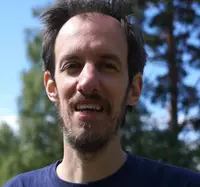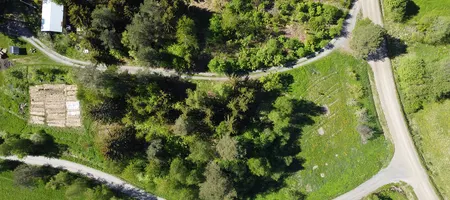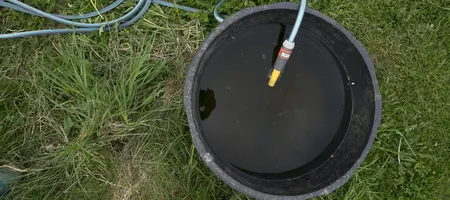Yes, there are processes and there are good processes. Necessarily both are not the same. There are also those that cry for adaption and alteration. And one of those processes is Obredim. If you have used Obredim for some time, like I did to create Continuous Integration, you might find it a little tricky when it comes to the stage of Evaluation and Design. While I was working on a design I had to postpone the implementation phase due to bad weather. I was then sitting on the couche looking at my design while having a cup of tea. And this was actually a lucky incident, because I got some new intel during that time. And as always, Permaculture is knowledge intensive. The lack of knowledge - actually the new acquired knowledge, helped me to redesign the project and by that I came to a far better and easier implementable design. For a 2 man show this made a lot of a difference. If you are for example going to build a greenhouse you might allocate time and money as your resources. After all you want it to be good, very good. You want it to be a special place for your family. But if you can undercut the time used for building by the factor 2 you might be pretty happy. Because I rushed from design to implementation I would have integrated something that later had to move out or would have needed changes. For me a change in the Obredim process was necessary to fit my needs.
---------
The Obr3dim process
Why
Example of the process
Feedback
Reflections
---------
The Obr3dim process
What I then did changed how I used the Obredim process drastically. Instead of having an evaluation step just after the R I also put it in after the D. And then I rounded this two steps for 3 times. The proposed process is called Obr3dim and goes like this
- Observation
- Boundaries
- Recourses
- Evaluation
- 3 x Design & Evaluation
- Implement
- Maintain
The Evaluation step happens also after the design phase and design & evaluation goes for 3 rounds. You don't implement before you haven't evaluated your design for at least 3 times.
Obr3dim can be combined with Obredim(et) and will result in Obr3dim(et). You might also want to combine it with Vobredim or Vobredimet.
Why
At the transfer or handoff from Design to Implementation the resources stated becomes real. Means for example that allocated money and time needs be put forward. Imagine you are building a greenhouse that has price tag of 5.000 € attached to it. Which is quite a low number compared to Permaculture projects for many ha of land that come with price tags like 50.000 €, or 500.000 €, or even more. For me that handoff is the weakest point within Obredim and it is where failures in design become real. In order to make sure that your process supports your work and makes sure that your resources are used wisely you should at least have one evaluation at the end of your design. Still your might change your design for several hundreds of times if that is something you do, but once you have put your pencil aside you switch to Evaluation and look with your Quality Managers eyes onto your designs. Perhaps you might want to get feedback from someone else. But you don't implement right away. Ok, if you are playboy, genius, billionaire, you don't care. You buy whatever you need to get things done - but that's not Permaculture at all, or? In Permaculture we work wise with Resources, we care for the Earth and the People. Your 3 rounds don't mean that your design everything from scratch again. It could be iterative design. Important is the check once you said: "Done designing, let's implement". It's like evaluating a design by a tutor. You check if several things are in place and if not put things on hold and go back to design phase.
How do I do the checks, especially for bigger designs? I first go to Zone 5, or neighbors' forest (or whatever is yours) and think about my design prior evaluation. I then detach from the design mentally or actually from the design phase. Once back I put my evaluator hat on and check against what I put down in observed, boundaries and resources and see if everything is inline with the design. I check against the design principles - and see how many are used. The more the better. I check against the ethics and see if all 3 are in place. I also ask for the design process used. In this case I came up with Obr3dim by Serendipity. According to the UK Permaculture Association we need to use certain tools and processe. But many good things happen while they can and not all need to follow an intentional design process to be marvelous. I guess that those processes are demanded because most of the people working for the first time on their design don't understand where they are. I get that. And I understand how useful they are. Ok, then I let some time go by. Come back to the design and see what I have written during evaluation. You might be already in a good spot or you might be far of but now you have to chance to come up with a better design. And you repeat that for 3 times.
Now someone can say: "You are an unexperienced designer you shouldn't work on a 5.000 € project if you have no understanding what you are doing". And my answer is: "Mind your language". Those processes should be tailored to the needs of the ones using it. And if scaffolding is necessary, then I will integrate it. I added those for me necessary additional steps that work like a scaffold. It supports my designs and makes them better because it binds me to think about it longer. I tend to rush into implementation and Obr3dim stops that. It is one of the best people care tools I have created for myself so far in terms of the Diploma and I'm happy that I got this right from the beginning.
For me this is it. I'll use it from now on in every design that cries for such a process. Obr3dim is part of my designers toolbox. I have used it already in the "Continuous Integration" design. But as I have used Obredim itself often I still need to tell myself that after design comes evaluation and that I have to do that for 3 times. I'll have to adapt to it.
Example of the process
In order to show the process I thought of something, an example, something simple and straight forward.
Observe
As this design came by Serendipity I didn't follow any process by creating the process. But in order to show what Obr3dim can do we take what I have observed about it: Obredim is poorly documented. For all kinds of processes, like PDCA (Deming Circle) or OODA, there is a Wikipedia page around. That makes sure that first of all there is legitimization of something and that this stuff really exist. And there is a basic common understanding - clarity. But in terms of Obredim there is either no Wikipedia page and actually there is no real good page with an explanation at Googles front page. There are all kinds of link lists that came with links not working. There is even a page from the UK Permaculture association which is just a link to an archived version of a website. The UK Permaculture association host their Diploma Guide online as PDF. That guide mentions Obredim. The UK Permaculture Association even has a "check for intentional process used" in their Diploma assessment sheet. Besides all that lack of quality documentation written in English the real good documentation is written in French.
Boundaries
This example design is only to show how the Obr3dim process works. It is a simply documentation of what is there. No money involved.
Resources
My knowledge in how to write Wikipedia articles and how to get around the web. Basically time and knowledge. I can ask Lumia to translate me the French websites and I can use Google Translate for it.
Evaluation
So, what do we have here? Time, knowledge, a problem. I think we are good to go. As this is a pretty limited design the key aspect is the problem is the solution and make the least change for maximum effect. Those two should guide the design.
Design
The problem is the solution. As there is no Wikipedia Page we need to write a Wikipedia page about Obredim. In order to do that I need to create an account. I also need to structure the article I'm intending to write. I need to run some research within the Wikipedia to find the right category within I'm going to place the article, probably something like Process Flow, or Design Process, or something similar. I also will write about Obr3dim and link it against this article at Beyondbuckthorns. Aranya wrote in his "Permaculture Design" book about Obredim so I will cross reference his ISBN within the reference and bibliography section of the article. I will also run a Google search for more references to back the article.
The proposed article structure is
- Intro
- Meaning
- Observe
- Boundaries
- Resources
- Evaluation
- Design
- Implement
- Maintain
- Versions
- Obredimet
- Obr3dimet
- References
- Further Reading
The right category is "Permaculture". And the "See also" links are "Learning cycle" and "Systems development lifecycle". A link towards Beyondbuckthorns isn't possible as this is a conflict of interest.
Evaluate
This is now the part were we evaluate the design prior implementation. Is this safe enough to try? Does it fulfill its purpose for Earth care, People care, Fair share? And: How does it do that? I think it is first of all good people care. The process gets documented and will be every time available on top of the google search if someone searches for Obredim. It is Earth care because less resources will be wasted for the search of a proper documentation. It is Fair Share in terms that if a process is recommended by different institutes it should be shared freely and openly with everyone not just by people being able to buy books. I think I didn't set the boundaries correct. I will only write in one language. The two principles that guided the simple design: make the least change and the problem is the solution are in line with the design. Writing an article is really just a tiny change and it solves the problem. I'm now going back to Design.
Design2
This is incremental. I don't need to alter the initial design if I'm already happy with it. If not, it is time for changes. So, there is the possibility to change the actual Permaculture Wikipedia article in order to include a reference to Obredim but it depends on those who have written that article and it could be messy. Instead of writing or editing the article I will put in a suggestion in the talks section in see how it goes.
Evaluate2
The additional task can be done easily. The writers community at the Permaculture Wikipedia article seems to be active.
Design3
Within some time and some thoughts I haven't anaything to add.
Evaluate3
Nothing to evaluate as nothing changed.
Implement
As the design has passed the 3 evaluations it is good to go for implementation. Note, that the bigger and the more complicated the design the more sorrow the evaluation should be. In our case it is straight forward. I encurage you to even go for more than 3 rounds. I suggest to at least go as long as you can't add or change anything anymore. I also encurage you to discuss your design and evaluation with someone else.
The article I created is currently as draft at https://en.wikipedia.org/wiki/Draft:Obredim . Draft means that it needs to be submitted for review in order to become a real article. Once that has happend I start the discussion on the Permaculture articles "Talk" page.
The structure changed a bit because Wikipedia articles can have a "See also" section.
Maintain
In order to check back on the article I'm watching the article I created at the Wikipedia. I'll have my hawk eye on it. I get notified if changes occur. As the article is in its current stage a draft further steps are possible once the article is live.
Feedback
Nothing here yet. Check the comments section and leave one!
Reflection
Nothing here yet.
End credits
I used the following tools:
- Wiki
- Version Control
- Process: Serendipity
- Time consumed
- Writing: 5 hours
- Design process: 0,5 hours
- Implementation: 1 hour
- Implementation Wiki example: 3 hours
- Thanks to Lumia for constant help, translation and proofreading
The next design is called Log Men and is about hard- and software development of specific components used for specific tasks, like automating the water line heating in winter. Get ready for ESP8266 and ESP32 coding. Man your soldering irons. Grab yourself one of those delicious craft beers, relax, and don't forget: Seeds we grow!








